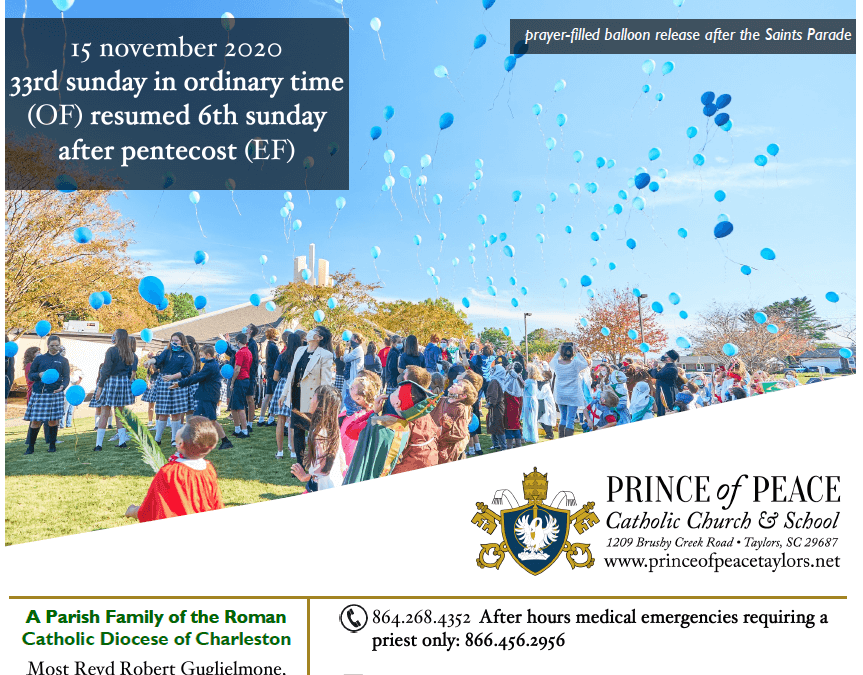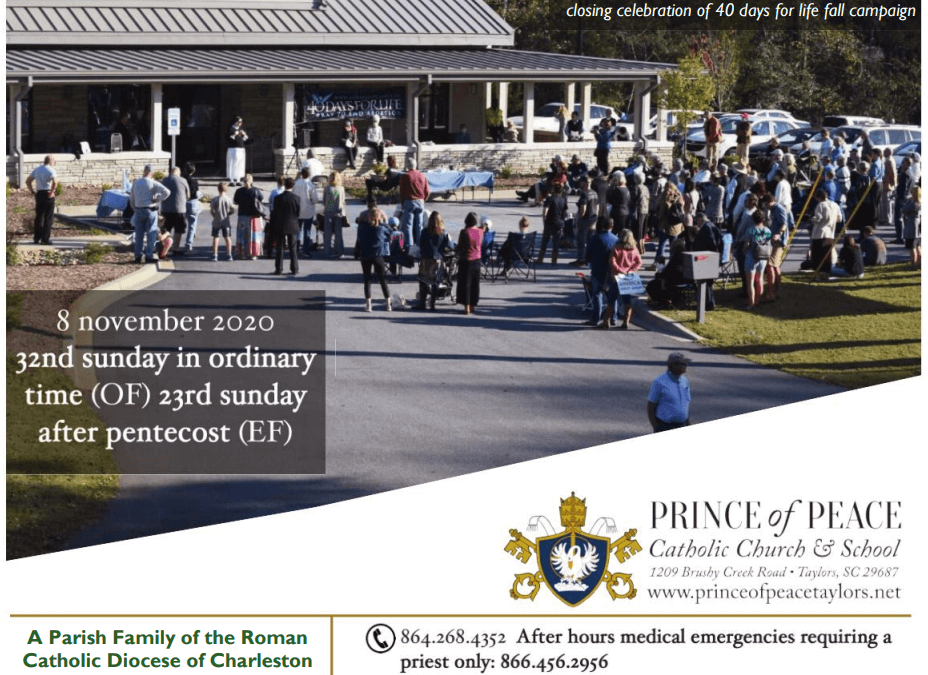
22 November: Feast of Christ the King
22 November: Feast of Christ the King (the Solemnity of Our Lord Jesus Christ, King of the Universe). Celebrated on the last Sunday of the liturgical year, this feast day was established by Pope Pius XI in 1925. As a response to the rise of secularization, atheism, and communism in the world and to publicly acknowledge the supremacy of Jesus Christ over all men and nations, Pope Pius XI issued the encyclical Quas Primas. This encyclical added the feast of “Our Lord Jesus Christ the King” to the Church liturgical calendar. It designated the feast to be celebrated on the last Sunday of October. This date, near All Saints’ Day and four weeks before Advent, was carefully chosen. It reminded the people that Jesus Christ is not only King of this world, reigning over the nations; He is also the eternal King, glorified by the saints in heaven, who will one day come to judge humankind. In his encyclical, the pope noted that the world’s disorder was the result of nations rejecting Christ. The pope instructed the faithful to use this annual feast as a time to consecrate themselves to the Sacred Heart of Jesus; tying the celebration to devotion to the Sacred Heart and to the living Christ in the Eucharist. In 1969, Pope Paul VI further enhanced this feast. To emphasize Christ’s universal reign, he changed the feast day name to “Our Lord Jesus Christ, King of the Universe”. He also changed the feast date to the last Sunday in the liturgical year, emphasizing even more strongly the connection between Christ’s kingship and His second advent (coming) to judge the world. Fr. Smith aptly referred to this new feast date as “the crown of Ordinary Time”. The pope also raised this feast to the highest rank of celebration on the Church calendar: that of a solemnity. Today, peace still eludes us; social, political and economic upheaval is still prevalent; and the nations continue to reject the Gospel. The world needs now, more than ever, our Christian witness to Christ the King’s rule over all things.
23 November is the feast day of Blessed Miguel Pro. It is a perfect tie-in to learn the phrase that this Mexican martyr bravely died proclaiming: “Viva Christo Rey!” (“Long live Christ the King!”)
Ideas for celebrating this feast day at home:
- Make crowns! (Or, visit Burger King today!) Here is a link for free printable Christ the King crowns.
- An easy Christ the King craft idea here.
- For a fun baking activity, make Christ the King cookie crowns.
- Set the table as if you were hosting a king for dinner: use cloth napkins, your best dishes. Light candles and fill fancy glasses with champagne or sparkling cider. You could also serve adults a Royal Flush cocktail made with Crown Royal.
- Make “Chicken á la king” for dinner: recipe here.
- Other dinner ideas “fit for a king”– a ham ‘jeweled’ with cloves; a crown roast; a very nice steak; or slow braised beef and vegetables with mashed potatoes. For dessert, a crown cake! (recipes here)
- Sing or listen to the hymn “For Christ the King” by Father Daniel Lord, from 1933. The Hallelujah Chorus from Handel’s Messiah is another resounding piece of music that captures the enthusiasm of this feast day: “King of Kings and Lord of Lords! And He shall reign for ever and ever.”
- Have a family procession in honor of Christ the King – idea here.
- Most importantly, consecrate your family to the Sacred Heart of Jesus: instructions here.
“If to Christ our Lord is given all power in heaven and on earth; if all men, purchased by his precious blood, are by a new right subjected to his dominion; if this power embraces all men, it must be clear that not one of our faculties is exempt from his empire. He must reign in our minds, which should assent with perfect submission and firm belief to revealed truths and to the doctrines of Christ. He must reign in our wills, which should obey the laws and precepts of God. He must reign in our hearts, which should spurn natural desires and love God above all things, and cleave to him alone.” (Quas Primas, Pope Pius XI)

18 November: Saint Rose Philippine Duchesne.
Born into a wealthy family in Grenoble, France, Rose learned political skills from her father and a love of the poor from her mother. At age 8, it became her dream to go to America and work with Native Americans after hearing a Jesuit missionary speak of his work there. Rose joined the convent of the Visitation nuns against her family’s wishes. When the French Revolution broke out, the convent was closed; so Rose took care of the poor, opened a school for homeless children, and risked her life helping priests in the underground. In 1804 she joined the Religious of the Sacred Heart. At 49 years old, St. Rose finally received permission to travel to St. Louis, Missouri, with four companions, and established the first convent of the Society at St. Charles. Cold, hunger, illness, poverty, and opposition did not diminish Rose’s vision and courage. She opened the first free school west of the Mississippi for Indians and whites. Rose was 71 years old when she finally obtained permission to work among the Potawatomi Indians. With three companions, she traveled by boat and oxcart to Sugar Creek, Kansas. Their convent was a wigwam, they slept on bare ground, and food was coarse. They opened a school for Indian girls and taught them sewing, weaving, and other household arts. Rose thought herself a failure because she could not master English or the Indian language, but her holiness made a deep impression on the Indians. Saint Rose prayed so incessantly that she was on her knees before the tabernacle when the Indians went to sleep and would still be kneeling there when they awoke. Wondering at this, some children put pebbles on the train of her habit one night. Next morning, the pebbles were still there. She hadn’t budged all night. This earned St. Rose the nickname Quahkahkanumad, meaning “She Who Prays Always.” The nuns cared for the sick and prayed with the dying. The Indians were deeply touched by their kindness and souls were won for Christ. Severe winters and lack of proper food sapped her health and Rose was sent back to St. Charles. She spent the last years of her life praying “for her Indians” and the rapidly growing Society she had established. She died at the age of 83, the first missionary nun to the Indians. St. Rose is the patron saint of perseverance amid adversity. She was canonized by St. Pope John Paul II in 1988.
“We cultivate a very small field for Christ, but we love it, knowing that God does not require great achievements but a heart that holds back nothing for self. The truest crosses are those we do not choose ourselves. He who has Jesus has everything.” – Saint Rose Philippine Duchesne
Ideas for celebrating this feast day at home:
- St. Rose taught Indian girls sewing and weaving. Here is an idea for paper weaving with children. OR, you could weave a paper Christmas tree in preparation of the upcoming season! Idea here and here.
- Today’s menu should include Native American Food. This cuisine’s defining theme is that most foods are locally sourced with seasonal ingredients. Some ideas: salmon (or other favorite fish), bison, turkey, or deer meat; veggies, cranberry sauce, corn, grits, succotash, beans, squash, or potatoes; corn bread and pumpkin pie. Click here for a dinner recipe idea.
- Pray to St. Rose Philippine Duchesne for the grace of becoming a prayerful soul. St. Rose was most known for her prayer life; perhaps the best way to honor her today is to spend time in prayer.
- St. Philippine did not convert people by speeches, but by prayer and great charity. Today, pray for someone who is your “enemy” and if possible perform some kindness for this person.

15 November 2020 Bulletin
Click to read the bulletin for 15 November 2020 here!

8 November 2020 Bulletin
Click to read the 8 November 2020 Bulletin here.
Recent Comments